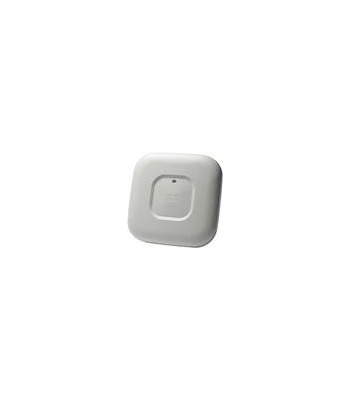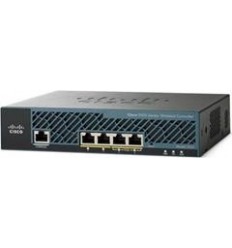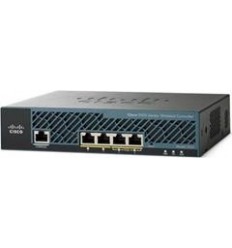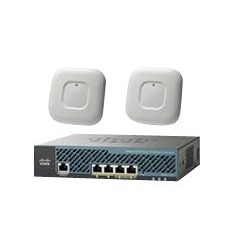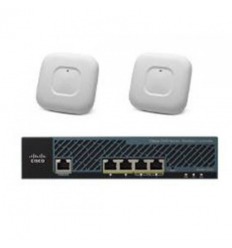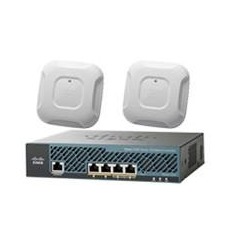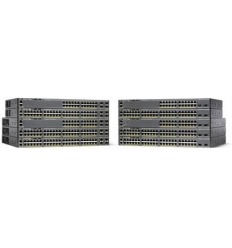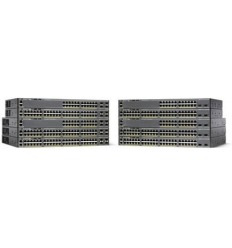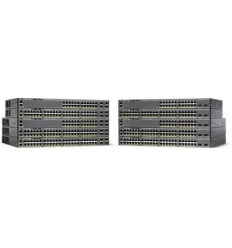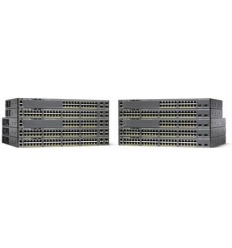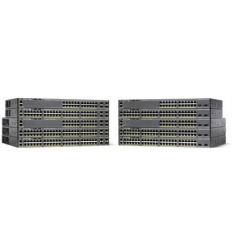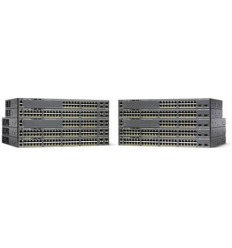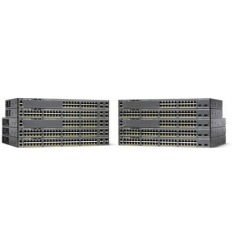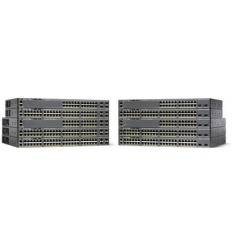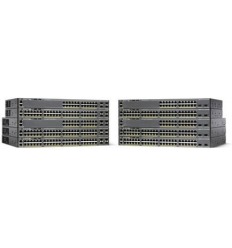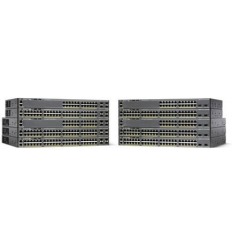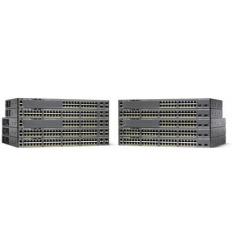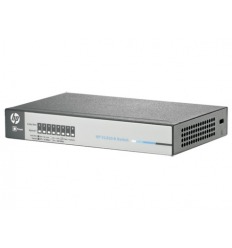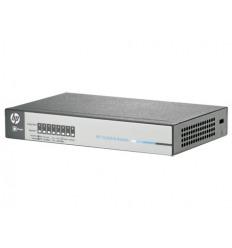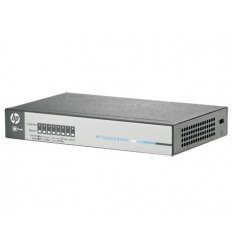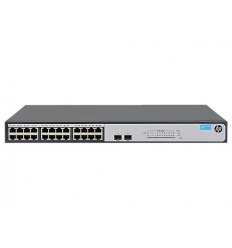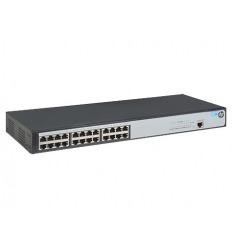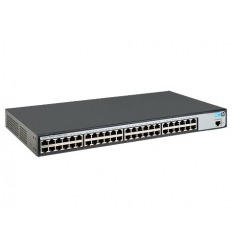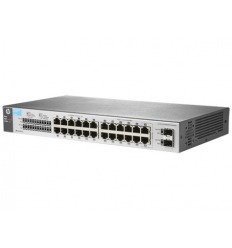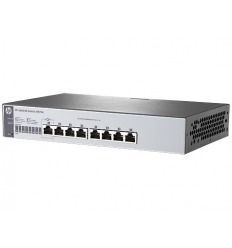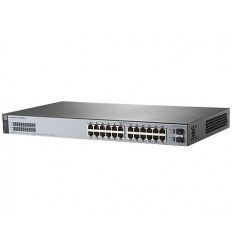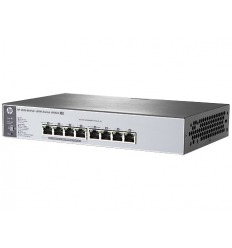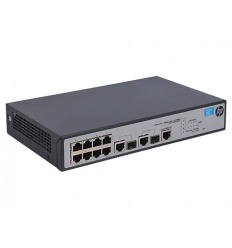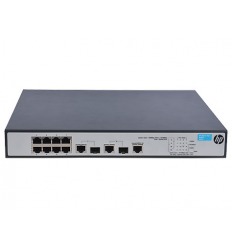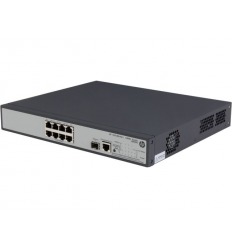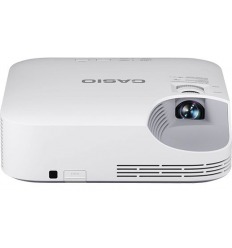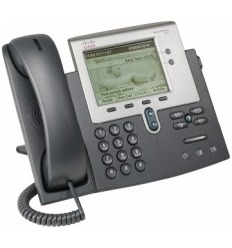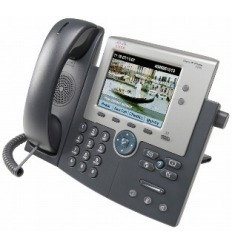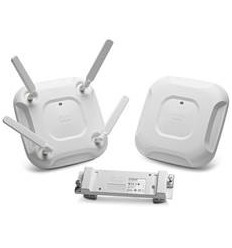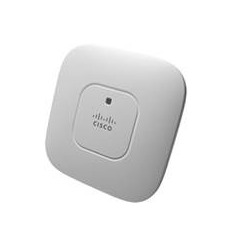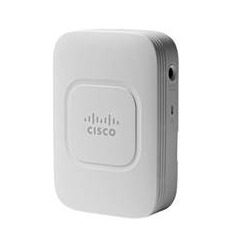If you operate a small or medium-sized enterprise network, deploy the Cisco® Aironet®1700 Series Access Point for the latest 802.11ac Wi-Fi technology at an attractive price. The 1700 Series meets the growing requirements of wireless networks by delivering better performance than 802.11n and providing key RF management features for improved wireless experiences.
If you operate a small or medium-sized enterprise network, deploy the Cisco® Aironet®1700 Series Access Point for the latest 802.11ac Wi-Fi technology at an attractive price. The 1700 Series meets the growing requirements of wireless networks by delivering better performance than 802.11n and providing key RF management features for improved wireless experiences.
The 1700 Series supports 802.11ac Wave 1 standard capabilities. That includes a theoretical connection rate of up to 867 Mbps.
The added throughput lets you stay ahead of growing bandwidth requirements as:
● More wireless clients associate with the network
● Users tap into bandwidth-heavy multimedia applications
● Mobile workers increasingly use multiple Wi-Fi devices
|
Feature |
Benefit |
|
802.11ac Wave 1 support with 3x3 multiple input and multiple output (MIMO) and two spatial streams |
Delivers higher rates over a greater range for more capacity and reliability than competing access points. Provides up to three times more bandwidth than 802.11n networks. |
|
Cisco CleanAir® Express Spectrum Intelligence |
Detects RF interference and provides basic spectrum analysis capabilities while simplifying ongoing operations across 20-, 40-, and 80-MHz-wide channels |
|
Optimized access point roaming |
Directs client devices to associate with the access point in their coverage range, offering the fastest data rate available |
|
MIMO equalization |
Boosts uplink performance and reliability by reducing the impact of signal fade |
|
Item |
Specification |
||||||||||||||||
|
Part numbers |
Cisco Aironet 1700i Access Point: Indoor environments, with internal antennas ● AIR-CAP1702I-x-K9: Dual-band, controller-based 802.11a/g/n/ac
● AIR-CAP1702I-xK910: Eco-pack (dual-band 802.11a/g/n/ac) 10 quantity access points
Cisco SMARTnet® Service for the Cisco Aironet 1700i Access Point with internal antennas ● CON-SNT-C172Ix: SMARTnet 8x5xNBD for 1700i access point (dual-band 802.11a/g/n/ac)
● CON-SNT-C172Ix10: SMARTnet 8x5xNBD for 10-quantity eco-pack 1700i access point (dual-band 802.11a/g/n/ac)
Regulatory domains: (x = regulatory domain) Customers are responsible for verifying approval for use in their individual countries. To verify approval and to identify the regulatory domain that corresponds to a particular country. Not all regulatory domains have been approved. As they are approved, the part numbers will be available on the Global Price List. Cisco Wireless LAN Services ● AS-WLAN-CNSLT:Cisco Wireless LAN Network Planning and Design Service
● AS-WLAN-CNSLT:Cisco Wireless LAN 802.11n Migration Service
● AS-WLAN-CNSLT:Cisco Wireless LAN Performance and Security Assessment Service
|
||||||||||||||||
|
Software |
Cisco Unified Wireless Network Software Release 8.0 or later Cisco Autonomous AP IOS Software Release 15.3.3-JAB or later |
||||||||||||||||
|
Supported wireless LAN controllers |
Cisco 2500 Series Wireless Controllers, Cisco Wireless Controller Module for ISR G2, Cisco Wireless Services Module 2 (WiSM2) for Cisco Catalyst® 6500 Series Switches, Cisco 5500 Series Wireless Controllers, Cisco Flex® 7500 Series Wireless Controllers, Cisco 8500 Series Wireless Controllers, Cisco Virtual Wireless Controller; Cisco 5760 Wireless LAN Controller, Cisco Catalyst 3850 Series Switches, Cisco Catalyst 3650 Series Switches |
||||||||||||||||
|
802.11n version 2.0 (and related) capabilities |
● 3x3 MIMO with two spatial streams
● Maximal ratio combining (MRC)
● 802.11n and 802.11a/g beamforming
● 20- and 40-MHz channels
● PHY data rates up to 300 Mbps (40 MHz with 5 GHz)
● Packet aggregation: A-MPDU (Tx/Rx), A-MSDU (Tx/Rx)
● 802.11 Dynamic Frequency Selection (DFS)
● Cyclic shift diversity (CSD) support
|
||||||||||||||||
|
802.11ac Wave 1 capabilities |
● 3x3 MIMO with two spatial streams
● MRC
● 802.11ac standard explicit beamforming
● 20-, 40-, and 80-MHz channels
● PHY data rates up to 867 Mbps (80 MHz in 5 GHz)
● Packet aggregation: A-MPDU (Tx/Rx), A-MSDU (Tx/Rx)
● 802.11 DFS
● CSD support
|
||||||||||||||||
|
Data rates supported |
802.11a: 6, 9, 12, 18, 24, 36, 48, and 54 Mbps |
||||||||||||||||
|
802.11g: 1, 2, 5.5, 6, 9, 11, 12, 18, 24, 36, 48, and 54 Mbps |
|||||||||||||||||
|
802.11n data rates on 2.4 GHz: |
|||||||||||||||||
|
MCS Index |
GI= 800 ns |
GI = 400 ns |
|
||||||||||||||
|
20-MHz Rate (Mbps) |
20-MHz Rate (Mbps) |
|
|||||||||||||||
|
0 |
6.5 |
7.2 |
|
||||||||||||||
|
1 |
13 |
14.4 |
|
||||||||||||||
|
2 |
19.5 |
21.7 |
|
||||||||||||||
|
3 |
26 |
28.9 |
|
||||||||||||||
|
4 |
39 |
43.3 |
|
||||||||||||||
|
5 |
52 |
57.8 |
|
||||||||||||||
|
6 |
58.5 |
65 |
|
||||||||||||||
|
7 |
65 |
72.2 |
|
||||||||||||||
|
8 |
13 |
14.4 |
|
||||||||||||||
|
9 |
26 |
28.9 |
|
||||||||||||||
|
10 |
39 |
43.3 |
|
||||||||||||||
|
11 |
52 |
57.8 |
|
||||||||||||||
|
12 |
78 |
86.7 |
|
||||||||||||||
|
13 |
104 |
115.6 |
|
||||||||||||||
|
14 |
117 |
130 |
|
||||||||||||||
|
15 |
130 |
144.4 |
|
||||||||||||||
|
802.11ac data rates (5 GHz): |
|||||||||||||||||
|
MCS Index |
Spatial Streams |
GI= 800ns |
GI = 400ns |
||||||||||||||
|
|
20-MHz Rate (Mbps) |
40-MHz Rate (Mbps) |
80-MHz Rate (Mbps) |
20-MHz Rate (Mbps) |
40-MHz Rate (Mbps) |
80-MHz Rate (Mbps) |
|||||||||||
|
0 |
1 |
6.5 |
13.5 |
29.3 |
7.2 |
15 |
32.5 |
||||||||||
|
1 |
1 |
13 |
27 |
58.5 |
14.4 |
30 |
65 |
||||||||||
|
2 |
1 |
19.5 |
40.5 |
87.8 |
21.7 |
45 |
97.5 |
||||||||||
|
3 |
1 |
26 |
54 |
117 |
28.9 |
60 |
130 |
||||||||||
|
4 |
1 |
39 |
81 |
175.5 |
43.3 |
90 |
195 |
||||||||||
|
5 |
1 |
52 |
108 |
234 |
57.8 |
120 |
260 |
||||||||||
|
6 |
1 |
58.5 |
121.5 |
263.3 |
65 |
135 |
292.5 |
||||||||||
|
7 |
1 |
65 |
135 |
292.5 |
72.2 |
150 |
325 |
||||||||||
|
8 |
1 |
78 |
162 |
351 |
86.7 |
180 |
390 |
||||||||||
|
9 |
1 |
- |
180 |
390 |
- |
200 |
433.3 |
||||||||||
|
0 |
2 |
13 |
27 |
58.5 |
14.4 |
30 |
65 |
||||||||||
|
1 |
2 |
26 |
54 |
117 |
28.9 |
60 |
130 |
||||||||||
|
2 |
2 |
39 |
81 |
175.5 |
43.3 |
90 |
195 |
||||||||||
|
3 |
2 |
52 |
108 |
234 |
57.8 |
120 |
260 |
||||||||||
|
4 |
2 |
78 |
162 |
351 |
86.7 |
180 |
390 |
||||||||||
|
5 |
2 |
104 |
216 |
468 |
115.6 |
240 |
520 |
||||||||||
|
6 |
2 |
117 |
243 |
526.5 |
130 |
270 |
585 |
||||||||||
|
7 |
2 |
130 |
270 |
585 |
144.4 |
300 |
650 |
||||||||||
|
8 |
2 |
156 |
324 |
702 |
173.3 |
360 |
780 |
||||||||||
|
9 |
2 |
- |
360 |
780 |
- |
400 |
866.7 |
||||||||||
|
Frequency band and 20-MHz operating channels |
A (A regulatory domain): ● 2.412 to 2.462 GHz; 11 channels
● 5.180 to 5.320 GHz; 8 channels
● 5.500 to 5.700 GHz; 8 channels
(excludes 5.600 to 5.640 GHz) ● 5.745 to 5.825 GHz; 5 channels
C (C regulatory domain): ● 2.412 to 2.472 GHz; 13 channels
● 5.745 to 5.825 GHz; 5 channels
D (D regulatory domain): ● 2.412 to 2.462 GHz; 11 channels
● 5.180 to 5.320 GHz; 8 channels
● 5.745 to 5.825 GHz; 5 channels
E (E regulatory domain): ● 2.412 to 2.472 GHz; 13 channels
● 5.180 to 5.320 GHz; 8 channels
● 5.500 to 5.700 GHz; 8 channels
(excludes 5.600 to 5.640 GHz) F (F regulatory domain): ● 2.412 to 2.472 GHz; 13 channels
● 5.745 to 5.805 GHz; 4 channels
H (H regulatory domain): ● 2.412 to 2.472 GHz; 13 channels
● 5.180 to 5.350 GHz; 8 channels
● 5.745 to 5.825 GHz; 5 channels
I (I regulatory domain): ● 2.412 to 2.472 GHz; 13 channels
● 5.180 to 5.320 GHz; 8 channels
K (K regulatory domain): ● 2.412 to 2.472 GHz; 13 channels
● 5.180 to 5.320 GHz; 8 channels
● 5.500 to 5.620 GHz; 7 channels
● 5.745 to 5.805 GHz; 4 channels
|
N (N regulatory domain): ● 2.412 to 2.462 GHz; 11 channels
● 5.180 to 5.320 GHz; 8 channels
● 5.745 to 5.825 GHz; 5 channels
Q (Q regulatory domain): ● 2.412 to 2.472 GHz; 13 channels
● 5.180 to 5.320 GHz; 8 channels
● 5.500 to 5.700 GHz; 11 channels
R (R regulatory domain): ● 2.412 to 2.472 GHz; 13 channels
● 5.180 to 5.320 GHz; 8 channels
● 5.660 to 5.805 GHz; 7 channels
S (S regulatory domain): ● 2.412 to 2.472 GHz; 13 channels
● 5.180 to 5.320 GHz; 8 channels
● 5.500 to 5.700 GHz; 11 channels
● 5.745 to 5.825 GHz; 5 channels
T (T regulatory domain): ● 2.412 to 2.462 GHz; 11 channels
● 5.280 to 5.320 GHz; 3 channels
● 5.500 to 5.700 GHz; 8 channels
(excludes 5.600 to 5.640 GHz) ● 5.745 to 5.825 GHz; 5 channels
Z (Z regulatory domain): ● 2.412 to 2.462 GHz; 11 channels
● 5.180 to 5.320 GHz; 8 channels
● 5.500 to 5.700 GHz; 8 channels
(excludes 5.600 to 5.640 GHz) ● 5.745 to 5.825 GHz; 5 channels
|
|||||||||||||||
|
Note: Customers are responsible for verifying approval for use in their individual countries. To verify approval and to identify the regulatory domain that corresponds to a particular country. |
|||||||||||||||||
|
Maximum number of nonoverlapping channels |
2.4 GHz ● 802.11b/g:
◦ 20 MHz: 3
● 802.11n:
◦ 20 MHz: 3
|
5 GHz ● 802.11a:
◦ 20 MHz: 24
● 802.11n:
◦ 20 MHz: 24
◦ 40 MHz: 11
● 802.11ac:
◦ 20 MHz: 24
◦ 40 MHz: 11
◦ 80 MHz: 5
|
|||||||||||||||
|
Note: This varies by regulatory domain. Refer to the product documentation for specific details for each regulatory domain. |
|||||||||||||||||
|
Receive sensitivity |
● 802.11b (CCK)
◦ -101 dBm @ 1 Mbps
◦ -99 dBm @ 2 Mbps
◦ -93 dBm @ 5.5 Mbps
◦ -90 dBm @ 11 Mbps
|
● 802.11g (non HT20)
◦ -93 dBm @ 6 Mbps
◦ -92 dBm @ 9 Mbps
◦ -92 dBm @ 12 Mbps
◦ -91 dBm @ 18 Mbps
◦ -88 dBm @ 24 Mbps
◦ -85 dBm @ 36 Mbps
◦ -80 dBm @ 48 Mbps
◦ -79 dBm @ 54 Mbps
|
● 802.11a (non HT20)
◦ -93 dBm @ 6 Mbps
◦ -92 dBm @ 9 Mbps
◦ -92 dBm @ 12 Mbps
◦ -91 dBm @ 18 Mbps
◦ -88 dBm @ 24 Mbps
◦ -85 dBm @ 36 Mbps
◦ -80 dBm @ 48 Mbps
◦ -79 dBm @ 54 Mbps
|
||||||||||||||
|
|
2.4 GHz ● 802.11n (HT20)
◦ -93 dBm @ MCS0
◦ -92 dBm @ MCS1
◦ -90 dBm @ MCS2
◦ -87 dBm @ MCS3
◦ -84 dBm @ MCS4
◦ -79 dBm @ MCS5
◦ -78 dBm @ MCS6
◦ -77 dBm @ MCS7
◦ -92 dBm @ MCS8
◦ -90 dBm @ MCS9
◦ -88 dBm @ MCS10
◦ -85 dBm @ MCS11
◦ -82 dBm @ MCS12
◦ -78 dBm @ MCS13
◦ -76 dBm @ MCS14
◦ -75 dBm @ MCS15
|
|
5 GHz ● 802.11n (HT20)
◦ -93 dBm @ MCS0
◦ -92 dBm @ MCS1
◦ -90 dBm @ MCS2
◦ -87 dBm @ MCS3
◦ -84 dBm @ MCS4
◦ -80 dBm @ MCS5
◦ -78 dBm @ MCS6
◦ -77 dBm @ MCS7
◦ -92 dBm @ MCS8
◦ -90 dBm @ MCS9
◦ -88 dBm @ MCS10
◦ -85 dBm @ MCS11
◦ -82 dBm @ MCS12
◦ -77 dBm @ MCS13
◦ -76 dBm @ MCS14
◦ -74 dBm @ MCS15
|
5 GHz ● 802.11n (HT40)
◦ -90 dBm @ MCS0
◦ -88 dBm @ MCS1
◦ -87 dBm @ MCS2
◦ -84 dBm @ MCS3
◦ -81 dBm @ MCS4
◦ -76 dBm @ MCS5
◦ -75 dBm @ MCS6
◦ -74 dBm @ MCS7
◦ -89 dBm @ MCS8
◦ -87 dBm @ MCS9
◦ -85 dBm @ MCS10
◦ -82 dBm @ MCS11
◦ -78 dBm @ MCS12
◦ -74 dBm @ MCS13
◦ -73 dBm @ MCS14
◦ -71 dBm @ MCS15
|
|||||||||||||
|
|
802.11ac Receive Sensitivity |
||||||||||||||||
|
802.11ac (non HT80) ● -86 dBm @ 6 Mbps
● -74 dBm @ 54 Mbps
|
|||||||||||||||||
|
MCS Index[5] |
Spatial Streams |
|
|||||||||||||||
|
|
VHT20 |
VHT40 |
VHT80 |
VTH20-STBC |
VHT40-STBC |
VHT80-STBC |
|||||||||||
|
0 |
1 |
-92 dBm |
-89 dBm |
-85 dBm |
-92 dBm |
-89 dBm |
-85 dBm |
||||||||||
|
8 |
1 |
-73 dBm |
|
|
-73 dBm |
|
|
||||||||||
|
9 |
1 |
|
-68 dBm |
-65 dBm |
|
-68 dBm |
-65 dBm |
||||||||||
|
0 |
2 |
-91 dBm |
-87 dBm |
-84 dBm |
|
|
|
||||||||||
|
8 |
2 |
-71 dBm |
|
|
|
|
|
||||||||||
|
9 |
2 |
|
-66 dBm |
-62 dBm |
|
|
|
||||||||||
|
Maximum transmit power |
2.4 GHz ● 802.11b
◦ 22 dBm, 3 antennas
● 802.11g
◦ 22 dBm, 3 antennas
● 802.11n (HT20)
◦ 22 dBm, 3 antennas
|
5 GHz ● 802.11a
◦ 22 dBm, 3 antennas
● 802.11n (HT20)
◦ 22 dBm, 3 antennas
● 802.11n (HT40)
◦ 22 dBm, 3 antennas
● 802.11ac
◦ non-HT80: 22 dBm, 3 antennas
◦ VHT20 22 dBm, 3 antennas
◦ VHT40: 22 dBm, 3 antennas
◦ VHT80: 22 dBm, 3 antennas
◦ VHT20-STBC: 22 dBm, 3 antennas
◦ VHT40-STBC: 22 dBm, 3 antennas
◦ VHT80-STBC: 22 dBm, 3 antennas
|
|||||||||||||||
|
Note: The maximum power setting will vary by channel and according to individual country regulations. Refer to the product documentation for specific details. |
|||||||||||||||||
|
Available transmit power settings |
2.4 GHz ● 22 dBm (160 mW)
● 19 dBm (80 mW)
● 16 dBm (40 mW)
● 13 dBm (20 mW)
● 10 dBm (10 mW)
● 7 dBm (5 mW)
● 4 dBm (2.5 mW)
● 2 dBm (1.25 mW)
|
5 GHz ● 22 dBm (160 mW)
● 19 dBm (80 mW)
● 16 dBm (40 mW)
● 13 dBm (20 mW)
● 10 dBm (10 mW)
● 7 dBm (5 mW)
● 4 dBm (2.5 mW)
● 1 dBm (1.25 mW)
|
|||||||||||||||
|
Note: The maximum power setting will vary by channel and according to individual country regulations. Refer to the product documentation for specific details. |
|||||||||||||||||
|
Integrated antenna |
● 2.4 GHz, gain 4 dBi, internal omni, horizontal beamwidth 360°
● 5 GHz, gain 4 dBi, internal omni, horizontal beamwidth 360°
|
||||||||||||||||
|
Interfaces |
● 2x10/100/1000BASE-T autosensing (RJ-45)
● Management console port (RJ-45)
|
||||||||||||||||
|
Indicators |
● Status LED indicates boot loader status, association status, operating status, boot loader warnings, boot loader errors
|
||||||||||||||||
|
Dimensions |
● Access point (without mounting bracket): 8.69 x 8.69 x 1.99 in. (22.1 x 22.1 x 5.1 cm)
|
||||||||||||||||
|
Weight |
● 2.2 lb (1.0 kg)
|
||||||||||||||||
|
Environmental |
Cisco Aironet 1702i ● Nonoperating (storage) temperature: −22° to 158°F (-30° to 70°C)
● Nonoperating (storage) altitude test: 25˚C, 15,000 ft.
● Operating temperature: 32° to 104°F (0° to 40°C)
● Operating humidity: 10% to 90% percent (noncondensing)
● Operating altitude test: 40˚C, 9843 ft.
|
||||||||||||||||
|
System memory |
● 512 MB DRAM
● 64 MB flash
|
||||||||||||||||
|
Input power requirements |
● AP1700: 44 to 57 VDC
● Power supply and power injector: 100 to 240 VAC; 50 to 60 Hz
|
||||||||||||||||
|
Power draw |
● AP1700: 15W
|
||||||||||||||||
|
Powering options |
● 802.3at PoE+
● Enhanced PoE
● Cisco AP1700 power injectors (AIR-PWRINJ5=)
● Cisco AP1700 local power supply (AIR-PWR-B=)
|
||||||||||||||||
|
Warranty |
Limited lifetime hardware warranty |
||||||||||||||||
|
Compliance standards |
◦ UL 60950-1
◦ CAN/CSA-C22.2 No. 60950-1
◦ UL 2043
◦ IEC 60950-1
◦ EN 60950-1
◦ EN 50155
● Radio approvals:
◦ FCC Part 15.247, 15.407
◦ RSS-210 (Canada)
◦ EN 300.328, EN 301.893 (Europe)
◦ ARIB-STD 66 (Japan)
◦ ARIB-STD T71 (Japan)
◦ EMI and susceptibility (Class B)
◦ FCC Part 15.107 and 15.109
◦ ICES-003 (Canada)
◦ VCCI (Japan)
◦ EN 301.489-1 and -17 (Europe)
◦ EN 60601-1-2 EMC requirements for the Medical Directive 93/42/EEC
● IEEE standards:
◦ IEEE 802.11a/b/g, 802.11n, 802.11h, 802.11d
◦ IEEE 802.11ac Draft 5
● Security:
◦ 802.11i, Wi-Fi Protected Access 2 (WPA2), WPA
◦ 802.1X
◦ Advanced Encryption Standards (AES), Temporal Key Integrity Protocol (TKIP)
● Extensible Authentication Protocol (EAP) types:
◦ EAP-Transport Layer Security (TLS)
◦ EAP-Tunneled TLS (TTLS) or Microsoft Challenge Handshake Authentication Protocol Version 2 (MSCHAPv2)
◦ Protected EAP (PEAP) v0 or EAP-MSCHAPv2
◦ EAP-Flexible Authentication via Secure Tunneling (FAST)
◦ PEAP v1 or EAP-Generic Token Card (GTC)
◦ EAP-Subscriber Identity Module (SIM)
● Multimedia:
◦ Wi-Fi Multimedia (WMM)
● Other:
◦ FCC Bulletin OET-65C
◦ RSS-102
Wi-Fi CERTIFIED™ a, b, g, n, ac |
||||||||||||||||
Part Code:
AIR-CAP1702I-D-K9
- APC
- Arista
- Aruba
- ATEN
- Austin Hughes
- Aviosys
- Avocor
- Bailey
- BenQ
- Black Box
- Brother
- Cadyce
- Cisco
- Cramer
- Crestron
- Cyber Power
- Dell
- Digi
- DTEN
- Eaton
- Enconnex
- EPSON
- Extreme Networks
- Gefen
- Geist
- Heckler Design
- HPE
- IBM
- IXIa
- iXsystems
- Juniper Mist
- Kaminario
- Kramer
- Lantronix
- Lenovo
- Linksys
- Logitech
- Luxor
- Mellanox Technologies
- Microsoft
- MINICOM
- Moxa
- MRV
- Napatech
- Neat
- NetApp
- NETGEAR
- Nimble
- NTI
- NVIDIA
- OpenGear
- Panasonic
- Perle
- PlenaForm Systems
- Pure Storage
- Qnap
- Quantum
- Raritan
- RF Code
- Samsung
- Seagate
- Sensaphone
- ServerLIFT
- ServerTech
- Silicom
- Solarflare
- Sony
- StarTech
- Sun Microsystems
- Supermicro
- TDK
- Thinklogical
- TRENDnet
- TURTLE
- Vertiv
- Wacom
- Yubico
- Zoom
- ZPE Systems

